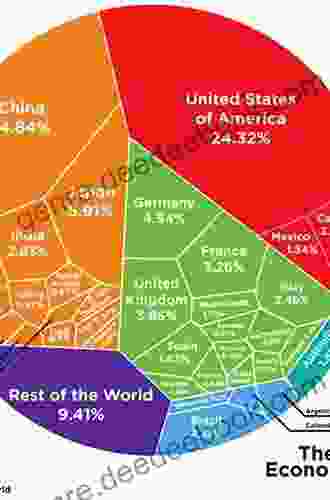From Bretton Woods to the Current Crisis: A Long and Winding Road

The Bretton Woods system was a system of international economic management established at the Bretton Woods Conference in 1944. The system was designed to prevent the kind of economic chaos that had ensued after World War I. It was based on the principles of fixed exchange rates, the convertibility of currencies into gold, and the creation of the International Monetary Fund (IMF) and the World Bank.
4 out of 5
| Language | : | English |
| File size | : | 611 KB |
| Text-to-Speech | : | Enabled |
| Screen Reader | : | Supported |
| Enhanced typesetting | : | Enabled |
| Word Wise | : | Enabled |
| Print length | : | 133 pages |
The Bretton Woods System
The Bretton Woods system was a major success in the post-World War II era. It helped to stabilize the global economy and promote economic growth. However, the system began to come under strain in the 1960s as the United States began to run large trade deficits. This led to a loss of confidence in the US dollar and a decline in the value of gold.
In 1971, President Richard Nixon took the United States off the gold standard. This effectively ended the Bretton Woods system and led to a period of floating exchange rates.
The Floating Exchange Rate System
The floating exchange rate system has been in place since 1971. Under this system, the value of currencies is determined by the forces of supply and demand in the foreign exchange market. This system has been more volatile than the Bretton Woods system, but it has also been more flexible.
The floating exchange rate system has been credited with helping to promote economic growth and reduce inflation. However, it has also been blamed for causing financial crises, such as the Asian financial crisis of 1997 and the global financial crisis of 2008.
The Current Crisis
The global financial crisis of 2008 was the most severe economic crisis since the Great Depression. The crisis was caused by a number of factors, including the subprime mortgage crisis, the collapse of the housing bubble, and the failure of several major financial institutions.
The crisis has had a devastating impact on the global economy. It has led to a sharp decline in economic growth, a rise in unemployment, and a loss of confidence in the financial system. The crisis has also raised questions about the future of the international monetary system.
The Future of the International Monetary System
The global financial crisis has led to a number of calls for reform of the international monetary system. Some economists have argued that the floating exchange rate system is too volatile and that it needs to be replaced with a more stable system. Others have argued that the IMF and the World Bank need to be reformed to make them more effective in preventing and resolving financial crises.
The future of the international monetary system is uncertain. However, it is clear that the current system is unsustainable. The global financial crisis has exposed the weaknesses of the floating exchange rate system and the need for reform. The international community must work together to create a new system that is more stable, more just, and more sustainable.
The Bretton Woods system was a major success in the post-World War II era. However, the system began to come under strain in the 1960s and was eventually replaced by the floating exchange rate system in 1971. The floating exchange rate system has been more volatile than the Bretton Woods system, but it has also been more flexible. The global financial crisis of 2008 has exposed the weaknesses of the floating exchange rate system and the need for reform. The international community must work together to create a new system that is more stable, more just, and more sustainable.
4 out of 5
| Language | : | English |
| File size | : | 611 KB |
| Text-to-Speech | : | Enabled |
| Screen Reader | : | Supported |
| Enhanced typesetting | : | Enabled |
| Word Wise | : | Enabled |
| Print length | : | 133 pages |
Do you want to contribute by writing guest posts on this blog?
Please contact us and send us a resume of previous articles that you have written.
 Book
Book Novel
Novel Page
Page Chapter
Chapter Reader
Reader Library
Library E-book
E-book Magazine
Magazine Paragraph
Paragraph Sentence
Sentence Glossary
Glossary Annotation
Annotation Footnote
Footnote Scroll
Scroll Bestseller
Bestseller Library card
Library card Memoir
Memoir Reference
Reference Encyclopedia
Encyclopedia Thesaurus
Thesaurus Resolution
Resolution Catalog
Catalog Borrowing
Borrowing Stacks
Stacks Archives
Archives Periodicals
Periodicals Scholarly
Scholarly Lending
Lending Journals
Journals Reading Room
Reading Room Rare Books
Rare Books Special Collections
Special Collections Interlibrary
Interlibrary Literacy
Literacy Study Group
Study Group Thesis
Thesis Storytelling
Storytelling Awards
Awards Book Club
Book Club Textbooks
Textbooks Suzanne Weyn
Suzanne Weyn Laura Chau
Laura Chau Erika Grey
Erika Grey Donna C Hurley
Donna C Hurley Beverly Rosas
Beverly Rosas Michael Ford
Michael Ford Subramanyam Gunda
Subramanyam Gunda Megan Miranda
Megan Miranda Jeb Barnes
Jeb Barnes Tony Hoagland
Tony Hoagland Patrick Takle
Patrick Takle Sandy Carlson
Sandy Carlson Eva Trotzig
Eva Trotzig Shauna L Tominey
Shauna L Tominey Rachel Beyer
Rachel Beyer Joseph R Oxfield
Joseph R Oxfield Jane A G Kise
Jane A G Kise Nicole Helm
Nicole Helm Elena Pankey
Elena Pankey J Albert Mann
J Albert Mann
Light bulbAdvertise smarter! Our strategic ad space ensures maximum exposure. Reserve your spot today!
 Reed MitchellFollow ·16.7k
Reed MitchellFollow ·16.7k Joseph FosterFollow ·8.7k
Joseph FosterFollow ·8.7k Liam WardFollow ·5.9k
Liam WardFollow ·5.9k Jared NelsonFollow ·13.1k
Jared NelsonFollow ·13.1k Warren BellFollow ·18.8k
Warren BellFollow ·18.8k Amir SimmonsFollow ·15.1k
Amir SimmonsFollow ·15.1k Kurt VonnegutFollow ·9.8k
Kurt VonnegutFollow ·9.8k Thomas MannFollow ·10.5k
Thomas MannFollow ·10.5k

 Rodney Parker
Rodney ParkerBasics Beginner Guide To Stage Sound
Start with a good source. The...

 Glenn Hayes
Glenn HayesKiwi in the Realm of Ra: Exploring the Mystical Kiwi...
Origins and...

 John Grisham
John GrishamAdvances In Marine Biology Volume 71
Unveiling the Hidden Wonders...

 Edison Mitchell
Edison MitchellGoodbye Brings Hello: Embracing the Transformative Power...
In the tapestry of life, endings...
4 out of 5
| Language | : | English |
| File size | : | 611 KB |
| Text-to-Speech | : | Enabled |
| Screen Reader | : | Supported |
| Enhanced typesetting | : | Enabled |
| Word Wise | : | Enabled |
| Print length | : | 133 pages |
















